Transport
Zaha Hadid Architects
Nordpark Cable Railway
Innsbruck, Austria
“The railway reflects the city’s continued commitment to the highest standards of architecture and pushes the boundaries of design and construction technology. These stations are the global benchmark for the use of double-curvature glass in construction.”
Zaha Hadid

Congress Station
The 1.8 km long Nordpark Cable Railway, comprised of four new stations and a cable-stayed suspension bridge over the river Inn, takes you from the center of Innsbruck to the top of the mountain in less than half an hour.
The design for each station adapts to the specific site conditions at various altitudes, whilst maintaining the coherent overall architectural language of fluidity. This approach was critical to the design for the railway, and demonstrates the seamless morphology of Hadid’s most recent architecture.



Starting at the underground Congress Station in the center of the city, the railway travels through a tunnel to Loewenhaus Station by by the river.



Loewenhaus Station
Loewenhaus Station
After crossing the river Inn on Hadid’s suspension bridge, held by steel cables from concrete pylons, the car starts its steep ascend on the Nordkette Mountain side to Alpenzoo Station.



Alpenzoo Station


Alpenzoo Station
The final station is at Hungerburg village, 288 meters above Innsbruck, where passengers can join the cable-car to the summit of the Seegrube Mountain.

Hungerburg Station


Hungerburg Station
“Each station has its own unique context, topography, altitude, and circulation. We studied natural phenomena such as glacial moraines and ice movements - as we wanted each station to use the fluid language of natural ice formations, like a frozen stream on the mountainside.”
Zaha Hadid
A high degree of flexibility within this language enables the shell structures to adjust to these various parameters whilst maintaining a coherent formal logic. Two contrasting elements “Shell & Shadow” generate each station’s spatial quality, with lightweight organic roof structures of double-curvature glass “floating” on top of concrete plinths, creating an artificial landscape that describes the movement and circulation within.

Rendering courtesy Zaha Hadid Architects
Congress Station

Rendering courtesy Zaha Hadid Architects
Loewenhaus Station

Rendering courtesy Zaha Hadid Architects
Alpenzoo Station

Hungerburg Station
New production methods such as CNC milling and thermoforming guaranteed a very precise and automatic translation of the computer generated design into the built structure. The architects used state-of-the-art design and manufacturing technologies developed for the automotive industry to create the streamlined aesthetics of each station.
Nordpark Cable Railway continues Hadid’s quest for an architecture of seamless fluidity, representing Zaha Hadid Architects’ very latest contribution to the current global architectural discourse in digital design and construction.

Drawing courtesy Zaha Hadid Architects
Site Plan

Drawing courtesy Zaha Hadid Architects
Street Level Plan Congress Station

Platform Level Plan Congress Station

Longitudinal Section Congress Station

Plan Lowenhaus Station

Longitudinal Section Loewenhaus Station

Drawing courtesy Zaha Hadid Architects
Plan Alpenzoo Station

Drawing courtesy Zaha Hadid Architects
Longitudinal Section Alpenzoo Station

Plan Hungerburg Station

Longitudinal Section Hungerburg Station
The railway opened on December 1, 2007.
It is the second project completed by Zaha Hadid in the city; the Bergisel Ski Jump by Hadid was completed in 2002 and awarded the Gold Medal for Design by the International Olympic Committee in 2005.
Total roof structure area (all stations inclusive):
2,500 square meters
Client: inkb (innsbrucker nordkettenbahnen gmbh)
Architect: Zaha Hadid Architects
Design: Zaha Hadid with Patrik Schumacher
Project Architect: Thomas Vietzke
Design Team:
Jens Borstelmann
Markus Planteu
Production Team:
Caroline Andersen
Makakrai Suthadarat
Marcela Spadaro
Anneka Wagener
Adriano di Gionnis
Peter Pichler
Susann Berggren
Local Partner: Malojer Baumanagement GmbH
Planning Adviser: ILF Beratende Ingenieure ZT
Contractor: Strabag AG
Engines & Cables Contractor: Leitner GmbH
Facade Contractor: Pagitz Metalltechnik GmbH
Structural Engineers (concrete base):
Baumann & Obholzer Ziviltechniker
Structural Engineers (roof structure):
Bollinger Grohmann Schneider ZT
Bridge/Track Engineer: ILF Beratende Ingenieure ZT
Zaha Hadid Architects (m3mare-com.blogspot.com)
PROGRAM: Train Station for high speed and regional services. Facilities for bus, taxi and car
parking; retail and civic; rail administration, police and fire services.
CLIENT: TAV s.p.a. Treno Alta Velocita via Mantova, 24 00198 Rome ITALY
ARCHITECT: Design Zaha Hadid with Patrik Schumacher
Project Architects / Managing Filippo Innocenti [Zaha Hadid]
Paola Cattarin [Zaha Hadid]















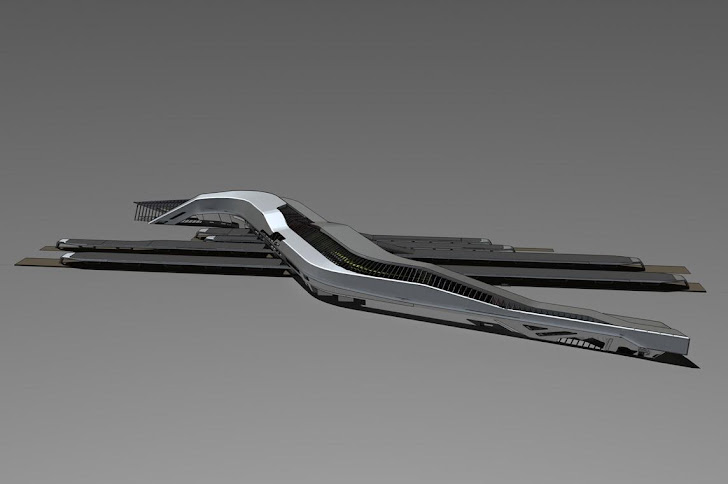





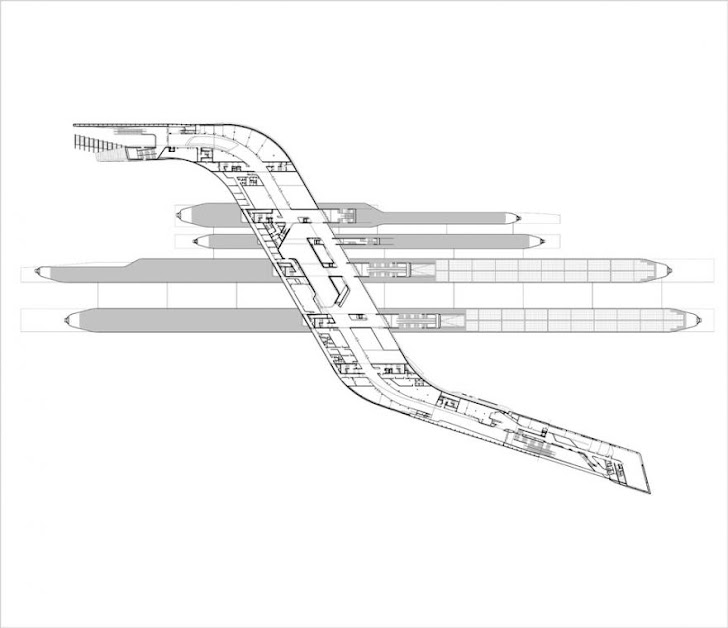























Followers
Lakefront Station / Cerver Design Studio

shared with us the design of a new transportation hub in Cleveland that will cohesively integrate pedestrians, cyclists, and automobiles. To maximize sun exposure, the façade’s structural glazing system has panels of fins where the number and density of such fins can be modified to create an efficient balance between active and passive solar. The active fins are cylindrical solar tubes that collect energy while also mediating solar heat gain in the interior spaces. In addition to the state-of-the-art trains and station facilities, a new park space will float above the rail station to connect Cleveland Convention Center to the Lake Front Station. ”The new hub will re-activate the flow of the entire Lake Front area and create a cohesive link to this dynamic site,” explained the architect.
More images after the break.
Project: Lakefront Station
Project Type: Competition, un-built
Location: Cleveland, OH
Year: 2010
Architect: CERVER Design Studio
Lead Designer: Robert Cervellione



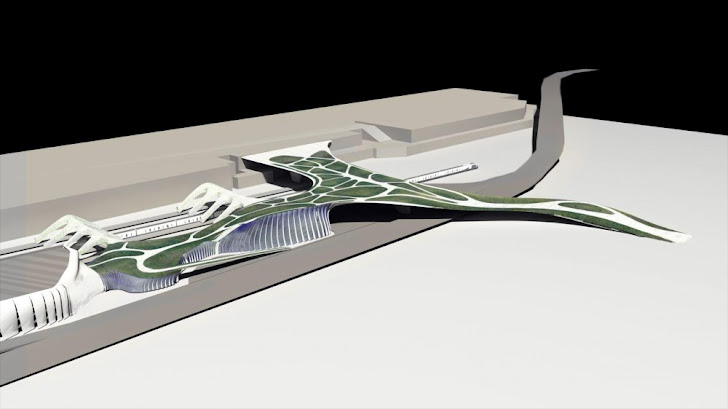



Spiraling Superfuturistic Newport Station in Wales Connects Two Sides Of The City
by Bridgette Meinhold, 02/22/11
filed under: Architecture, Green Transportation, Sustainable Building

Newport, Wales is cut in two by its rail line, and its old train station was seriously in need of an upgrade. The city and Network Rail decided to renovate the system for the Ryder Cup in october 2010, thus improving their rail service and providing an improved connection between the disparate sides of the city. London-based Grimshaw Architects came up with a spiraling, silver station with two concourses on either side of the tracks. Energy efficiency was kept at the heart of the design and rainwater is harvested from the domed roofs.
The tracks run smack dab through the middle of Newport and as a result, each side might as well be its own city. Newport’s previous station was inadequate for modern rail travelers with a station only on one side of the tracks forcing passengers to walk a long distance to alight a train going in the opposite direction. The goal of the new station was foremost to improve rail service, but secondly, to serve as a gateway to the city, which is the first Welsh city after leaving England and right before Cardiff.
Grimshaw’s solution was to build a station that spanned both sides of the tracks, creating a concourse on either side and a bridge to connect passengers to the middle platform. But rather than create bridges separate from the station, the walkways and concourses are one continuous spiraling building. Walkways, ramps, bridges and the ticket offices all seamlessly connect to provide an easily navigable and intuitive pathway for passengers.
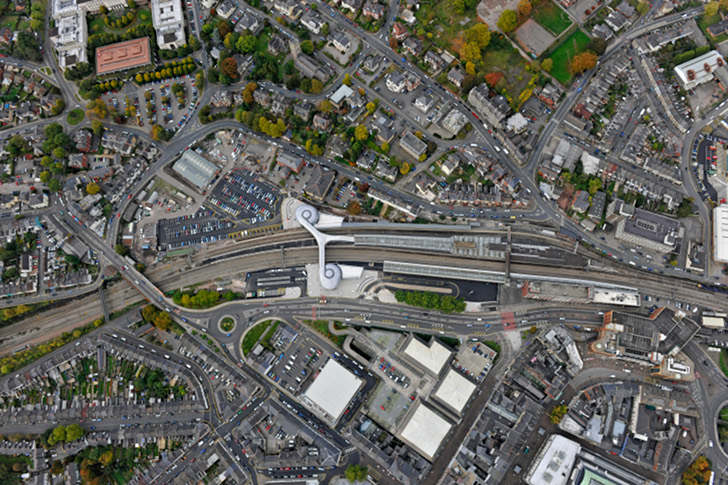










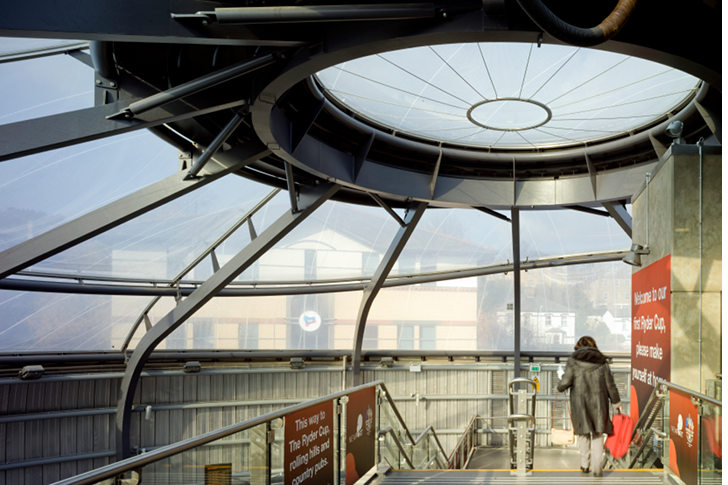





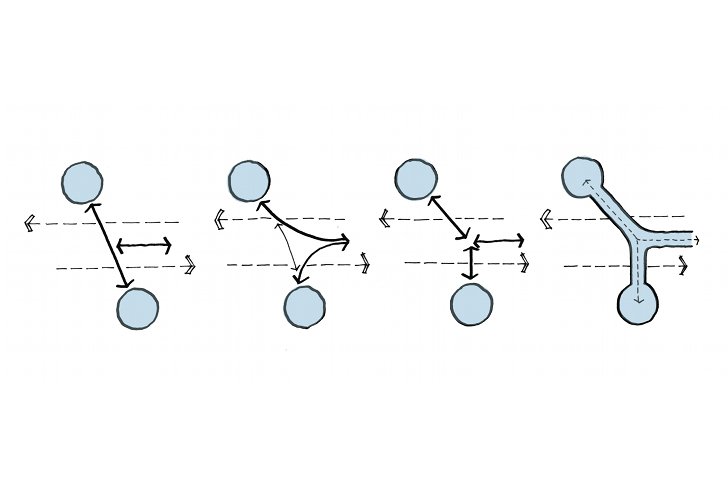


Guangzhou South Railway Station
Located at the heart of the Pearl River Delta region, Guangzhou South Station lies in between the cities of Guangzhou and Foshan. A comprehensive transport hub that serves a catchment area of more than 300 million people. The largest new station in Asia, it consists of 28 elevated island platforms and three underground metro lines, arranged over six floors. A mix of intercity, express and metro trains, with allowances for future expansion, and interchange to public and private transport systems. Designed to accommodate an anticipated daily passenger flow of over 300,000 by 2030, a clearly defined station layout was adopted. Inspired by contemporary airport design, a horizontal separation segregates arrivals and departures to expedite passenger flow.
In collaboration with the Fourth Railway Survey and Design Institute and the Beijing Institute of Architectural Design (BIAD).
- Architect
- Programme
- Location
- Construction status
- Materials























